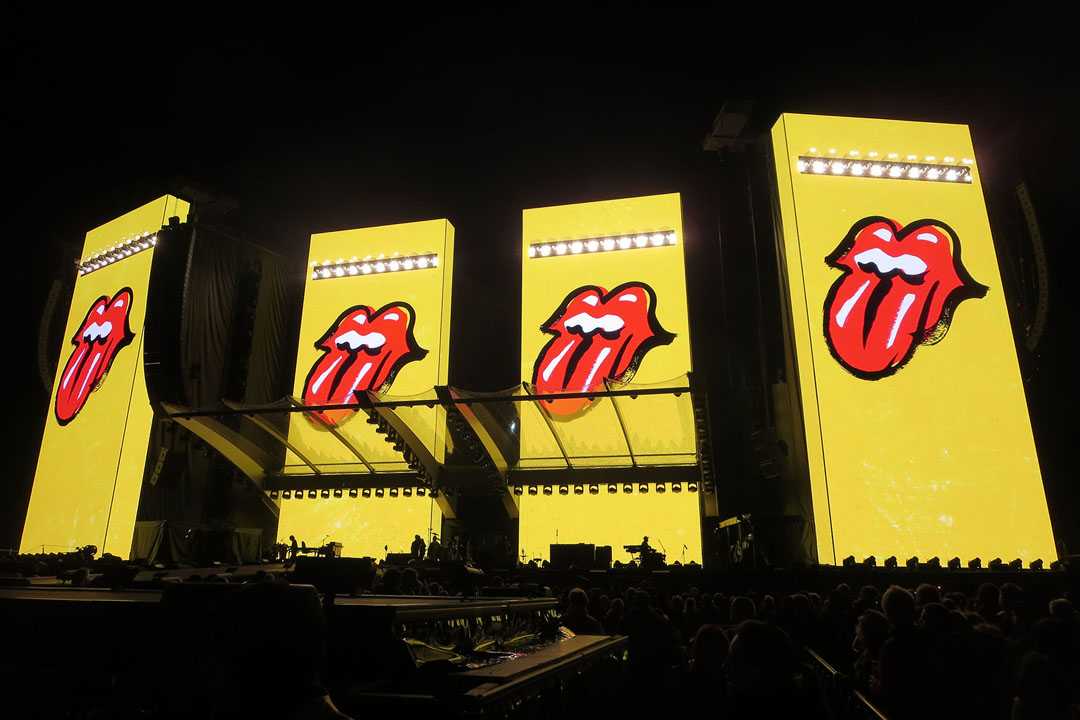Wicreations on Rolling Stones No Filter tour
- Details

WI’s team, led by Hans Willems and Koen Peeters, had to create a cantilevered stage roofing system above the main performance area; devise a method for rigging and securing four 23m x 11m LED video screens to the front of four large steel towers; and build two mobile technical areas.
Koen Peeters has worked on previous Rolling Stones Tours in 1998, 2002 and 2005. He said: “It’s great to be back working with the band and an amazing creative and technical team. We have really enjoyed the challenges and the collaboration, and I think the end results are something of which we can all be proud.”
After discussing the key design points with Ray Winkler from Stufish, Wicreations was approached by staging and steel specialist StageCo and asked to develop and fabricate two cantilevered roofs - two complete, steel, tower and roof systems.
Winkler wanted the stage roofing system to look ‘slick and streamlined and industrially super-chic’, with no visible raw metalwork and a full drainage system.
The four curved 12m-long steel roof beams are clad with aluminium panels and each beam breaks down into two sections. Each 12m section contains nine integral Martin MAC Viper moving lights, which are central to Patrick Woodroffe’s lighting design.
The lights travel in purpose-built beams designed by WI, complete with underside cladding, and each is pulled into place using four 250kg hoists rigged inside the roof and out of sight once the operation is complete, with the fixtures’ bodies protruding from the roof beam.
For the eight indoor shows on the itinerary, the cantilevered roof will be flown from the venues, so it will still be the heart of the performance space, and the construction also had to take this into consideration.
WI also devised a method for rigging and securing four 20m x 9m LED video screens to the front of four large onstage towers, so any wind loading experienced by the screens is transferred to the ‘black steel’ support towers behind to ensure safety.
A custom top truss was designed and built by WI for each tower, and the screens are hung on this from integral truss brackets that retract for transportation. An integrated load equalising system compensates for any truss deflections and ensures that the tension on all video columns is equally divided.
Two metres below the top of the LED screens is an 8m wide gap to accommodate a row of nine Robe BMFL Spot moving lights, each accompanied by four single cell blinders, protected from the elements by a transparent rain hat.
Onstage, two rolling sheds - stage left and stage right - are built from modular decks with heavy duty castors – to offer size variation – with detachable one-directional mesh fronts allowing a clear view out across the stage and an opaque view in from the stage so they blend into the blackout.
WI designed and engineered all hardware from a touring perspective, with quick and efficient deployment at each gig on any possible site in mind, using bespoke dollies into which all equipment packs down for travelling.
The video content has been produced by Sam Pattinson of Treatment Studios, the IMAG mix is being cut by camera director Nick Keiser and the video kit is supplied by Montreal-based Solotech. Neg Earth from London are delivering the lighting and rigging equipment. Jeremy Lloyd from Wonderworks undertook technical co-ordination during the development and pre-production period, and everything is being overseen on the road by Opie.
(Jim Evans)
















